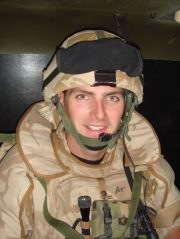12833 Private Harry Smalley
8th Battalion Leicestershire Regiment attached to 20 Kings Liverpool Regiment
Killed in Action, 30th July 1916. Age: 22.
 |
| Guillemont Road Cemetery |
Born in June 1894, Harry Smalley was the son of John Smalley (born 1868)
a Mechanical Engineer from Shepshed, and Maria Smalley (born 1871) of
Loughborough.
In 1901, when Harry was six, the family were living at number 5 Wards
End, Loughborough. He had an older brother and sister: John, born (1891) and
Dorothy (born 1892) and a younger brother, William Eric (born 1901). Harry was
educated at the Loughborough Grammar School and in 1911 the family had moved to
39 Market Place, Loughborough.
Harry was not married when he enlisted for short service (three
years with the colours) in Loughborough on the 3rd September 1914. He was twenty
years and three months old and joined the 8th Battalion of the Leicestershire
Regiment on the 24th September 1914.
Harry had been an apprentice outfitter with Bailey and Simkin since 1910
and his apprenticeship was due to expire on the 21st May 1915. He was
recorded as living at 39 Market Place, Loughborough in the parish of Emmanuel,
and his religion was Church of England. Harry was 5ft 9ins tall with a chest measurement of 36 inches and
normal vision. He weighed 12 stone 9 lbs, had a fresh complexion, black hair,
blue eyes and a small mole on his abdomen.
In October and November 1915 Harry
suffered influenza.
On 14th July 1916 he was attached to 20 Kings Liverpool Regiment.
The War Diary for the 30th July 1916 records:
TRENCHES 98 - 101. During the early part of the night of the 28th the
enemy fired some rifle grenades into the right of our sector (98). No damage
was done. During the night sent up an exceptional number of Very Lights. We had
a wiring party in front of 99 sector.
Harry was reported ‘missing’ on the 5th August 1916 by the Officer
Commanding the 20th Kings Liverpool. Recovery of his body was reported by OCGR
working party; he had died of wounds on or shortly after 30th July 2016.
Across his medical history record are the words “Dead. Single.”
Harry’s identity disc was returned to his father on the 1st March
1918.
He was awarded the 1914-15 Star on the 18th February 1921 and the
British War Medal and Victory Medal on the 2nd November 1921.
Harry Smalley is buried at Guillemont Road Cemetery, Guillemont (Grave
reference XII. M. 2.) which is 12 kilometres east of Albert in Picardy, France.
The inscription on his headstone reads: "His duty bravely done"
12833 Private Harry Smalley is
remembered on the Loughborough Carillon Tower War Memorial, Emmanuel Church’s
Roll of Honour and Loughborough Grammar School’s Roll of Honour.
Sources:
National Archives
Doyle, Michael, Their Name Liveth for Evermore: The Great War Roll of Honour for
Leicestershire and Rutland (Billingborough, Michael Doyle, 2009).
© Dr Karen Ette including photographs

